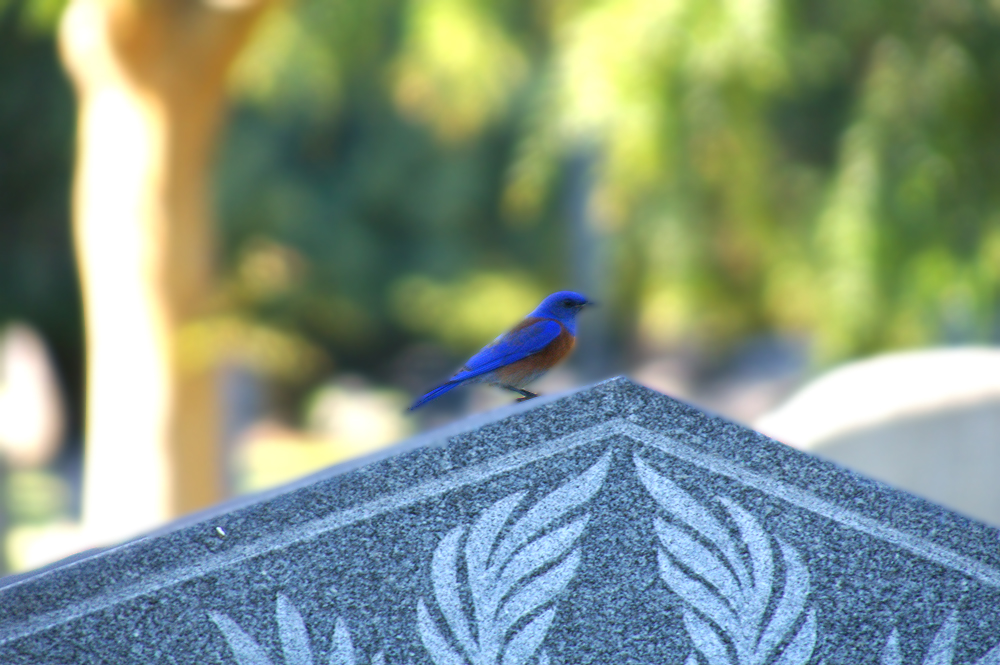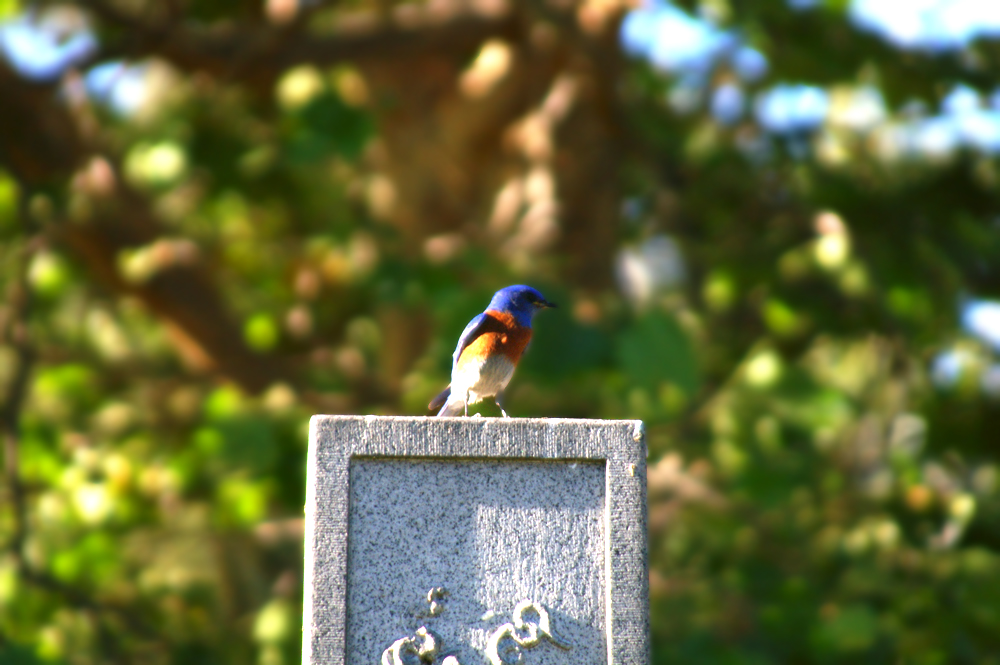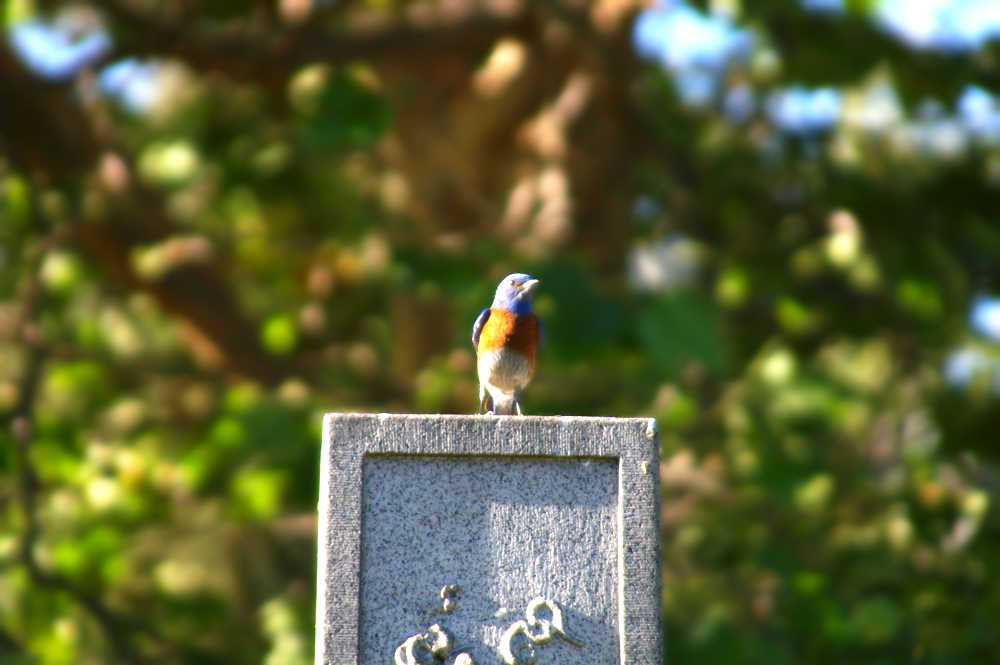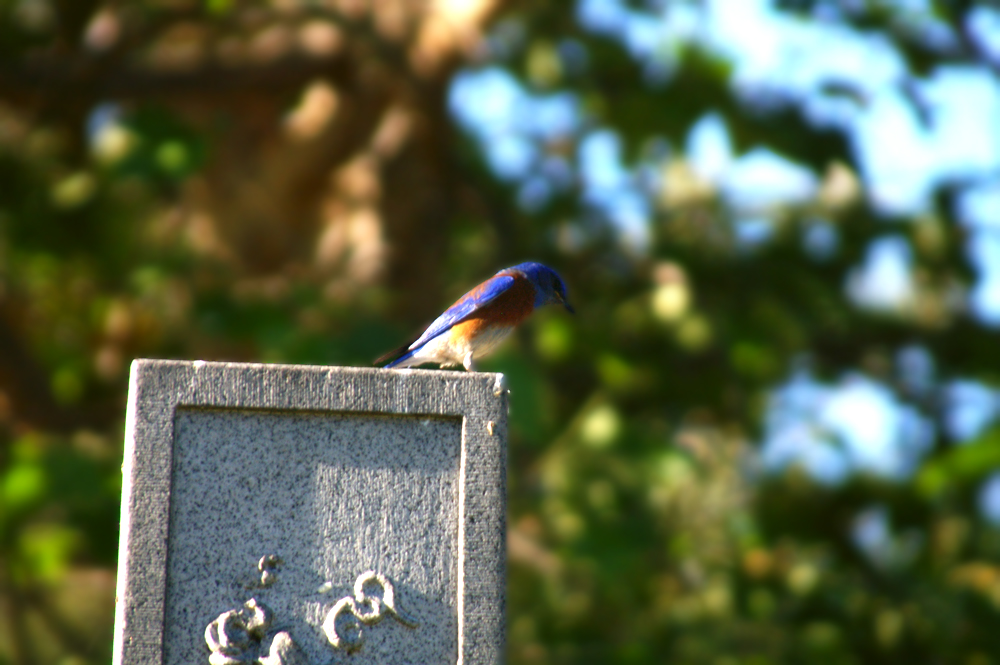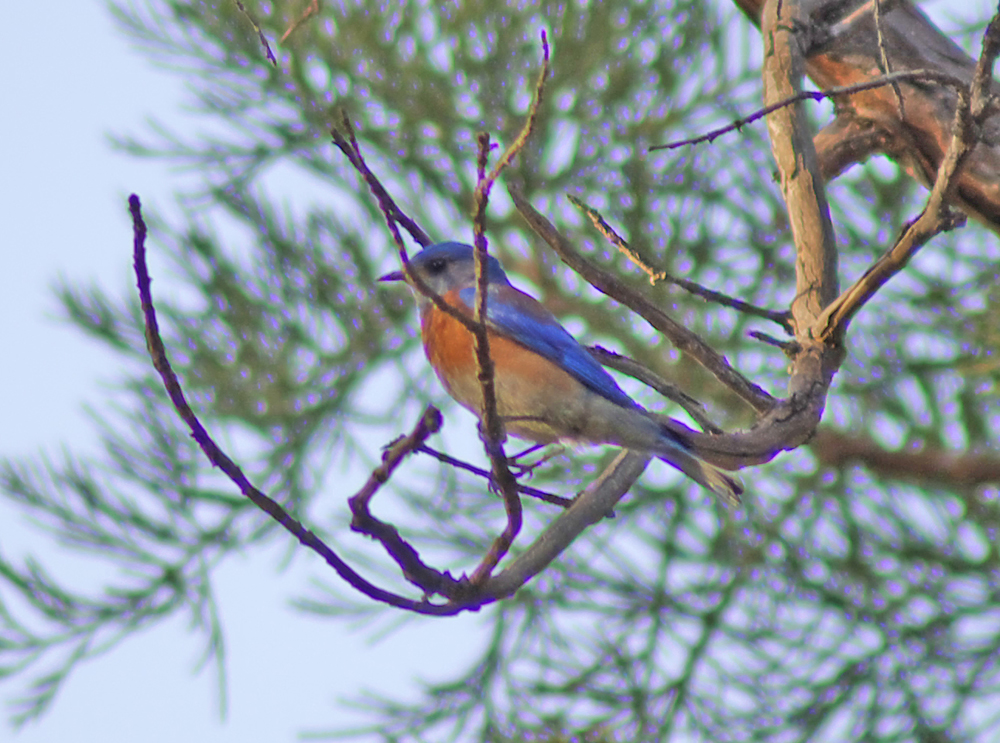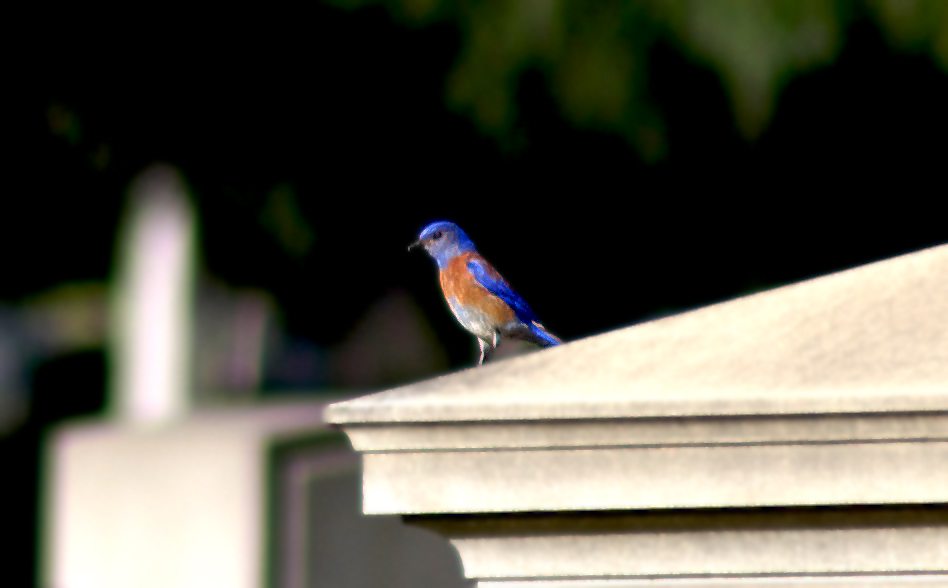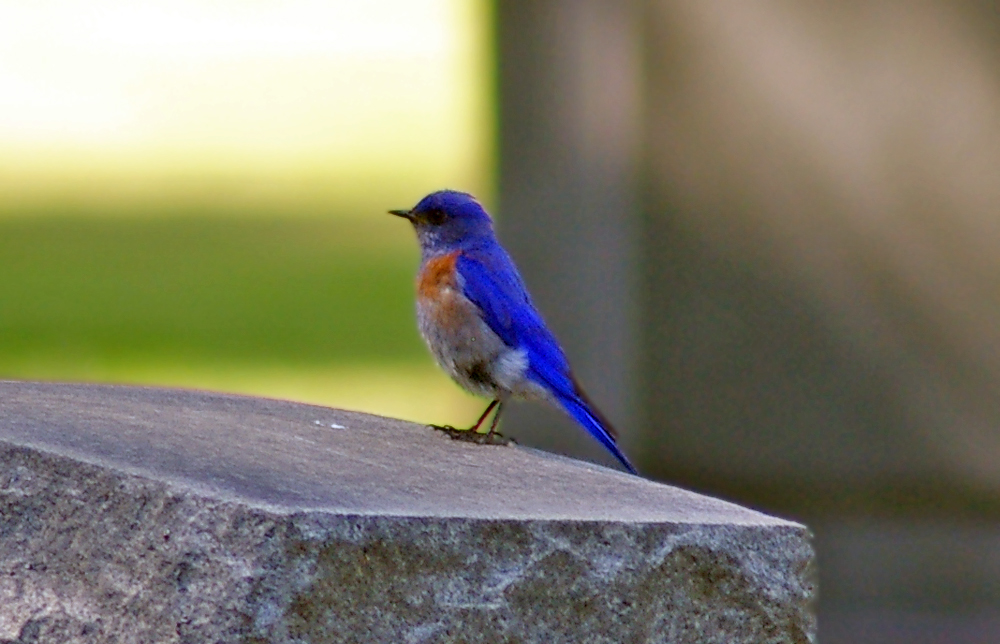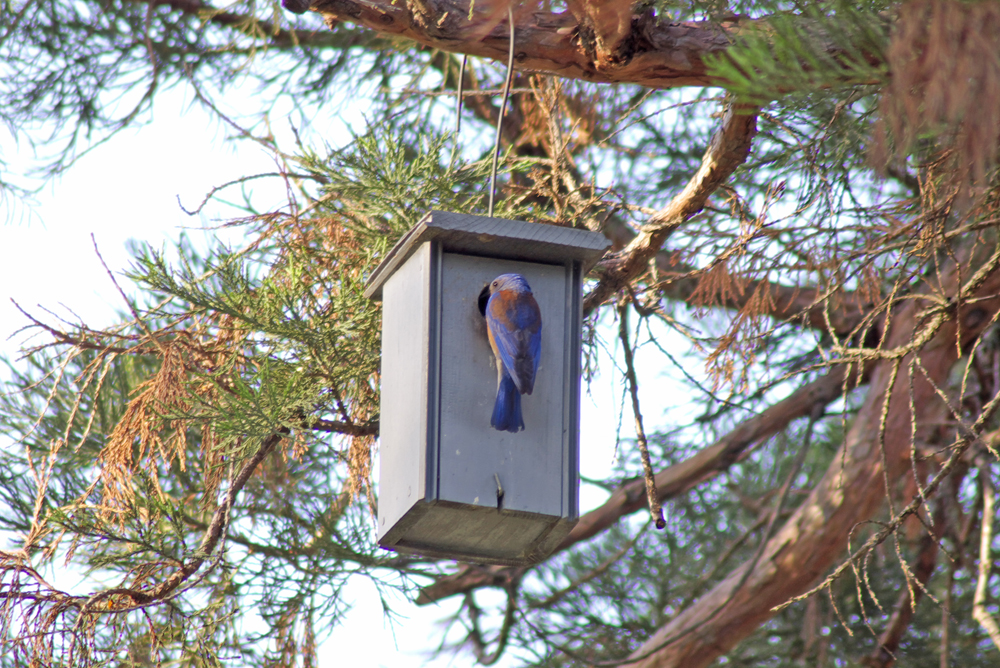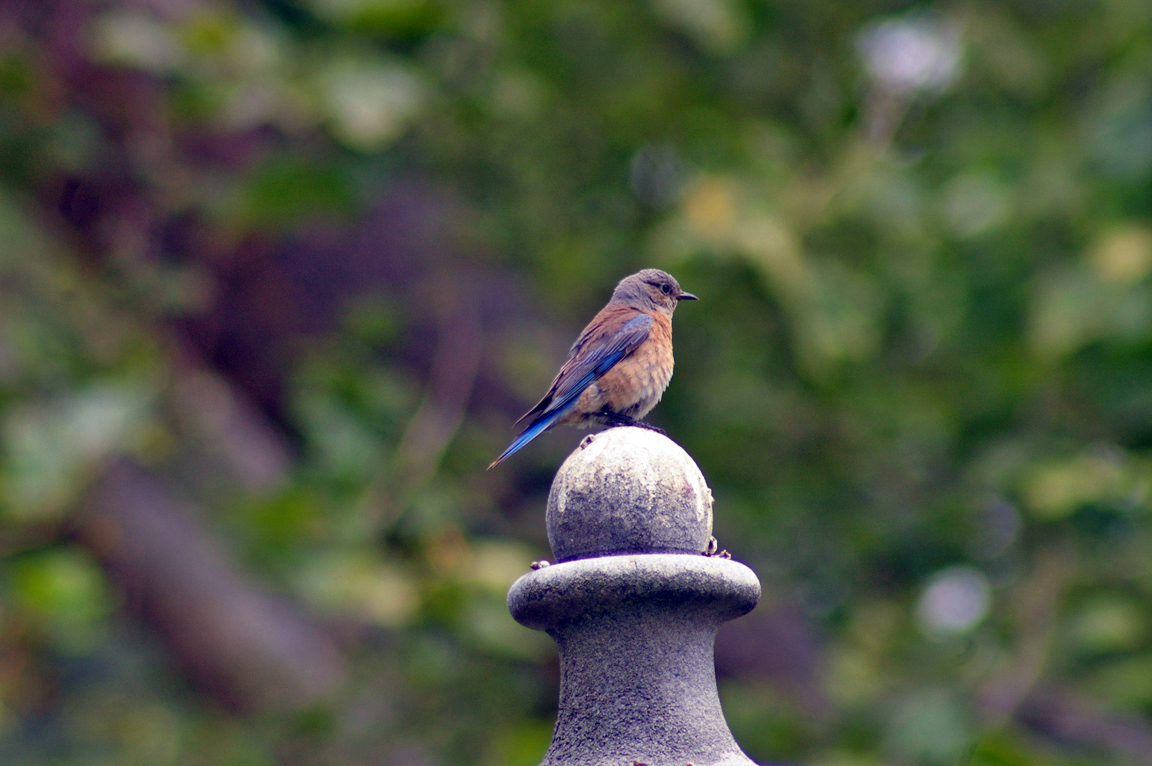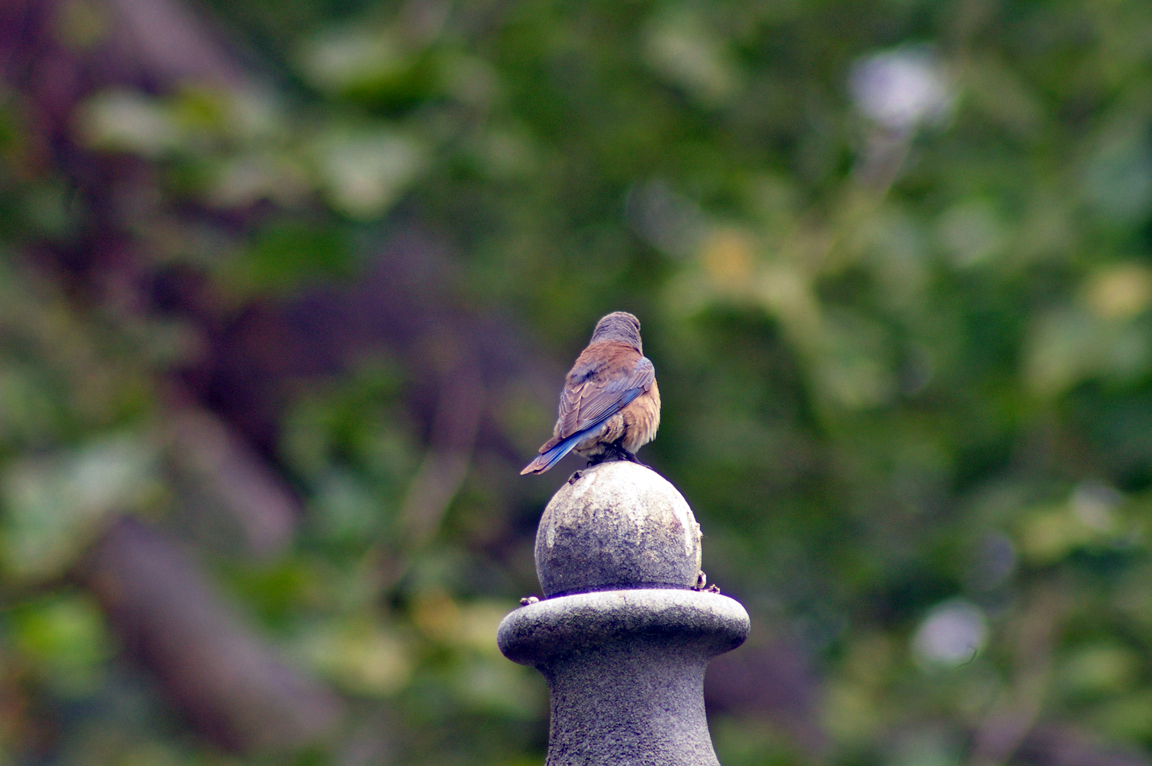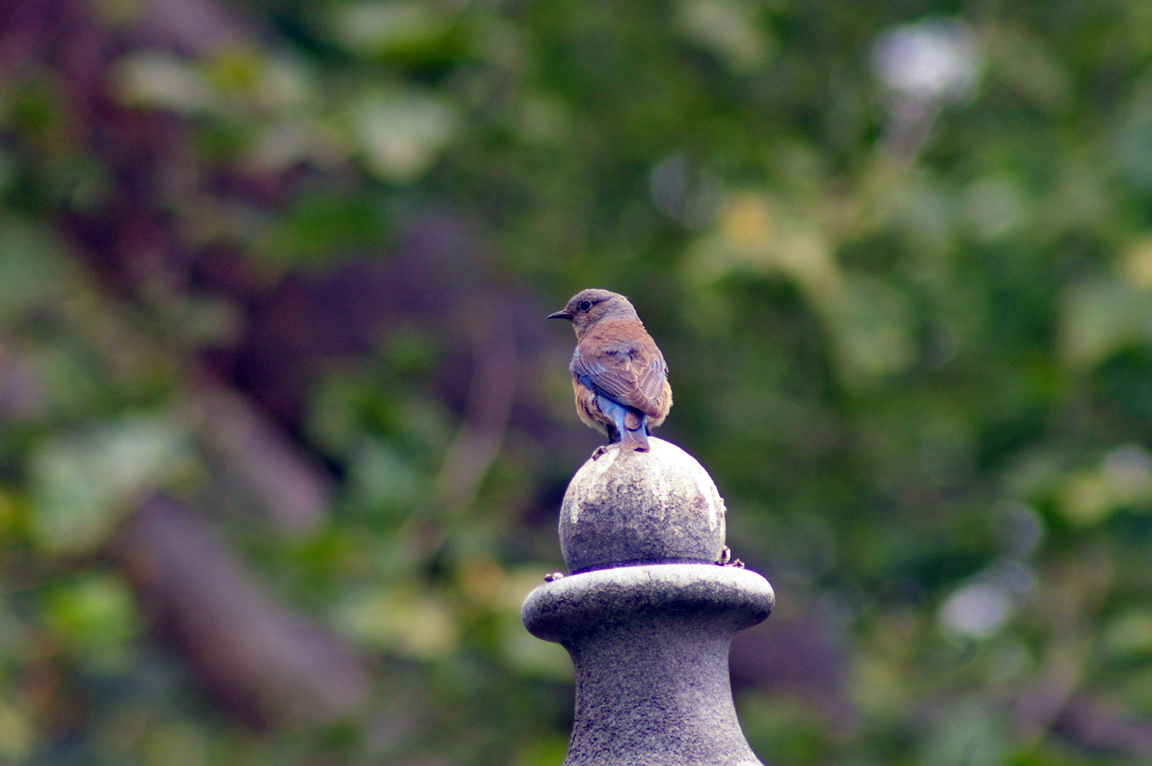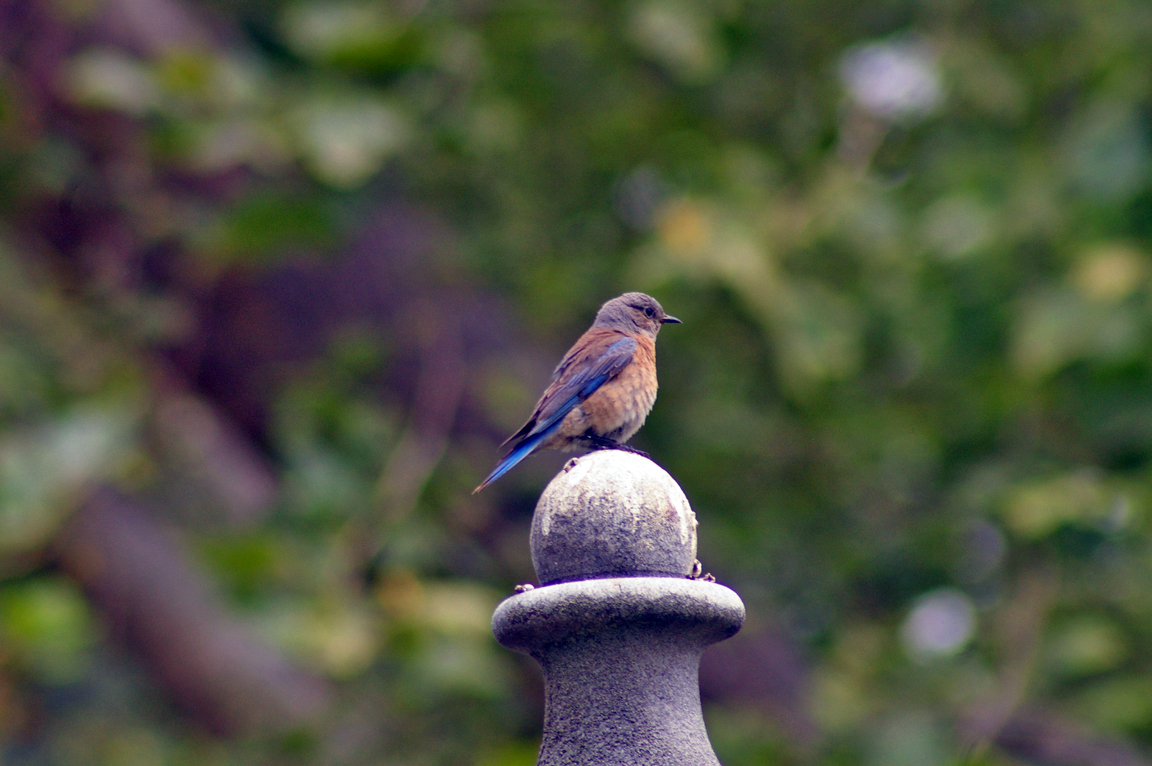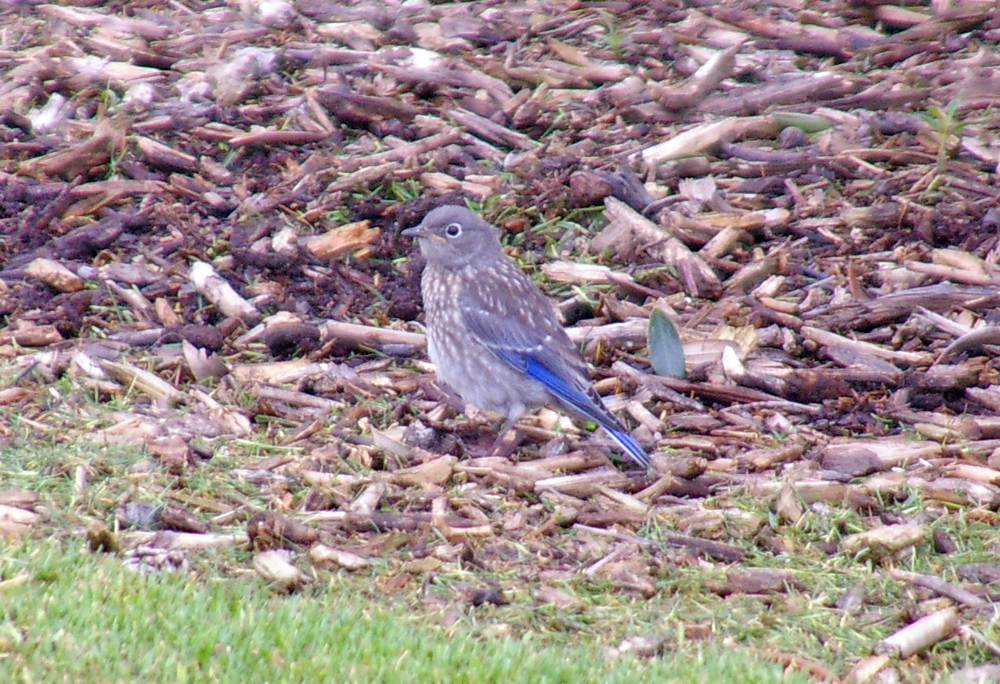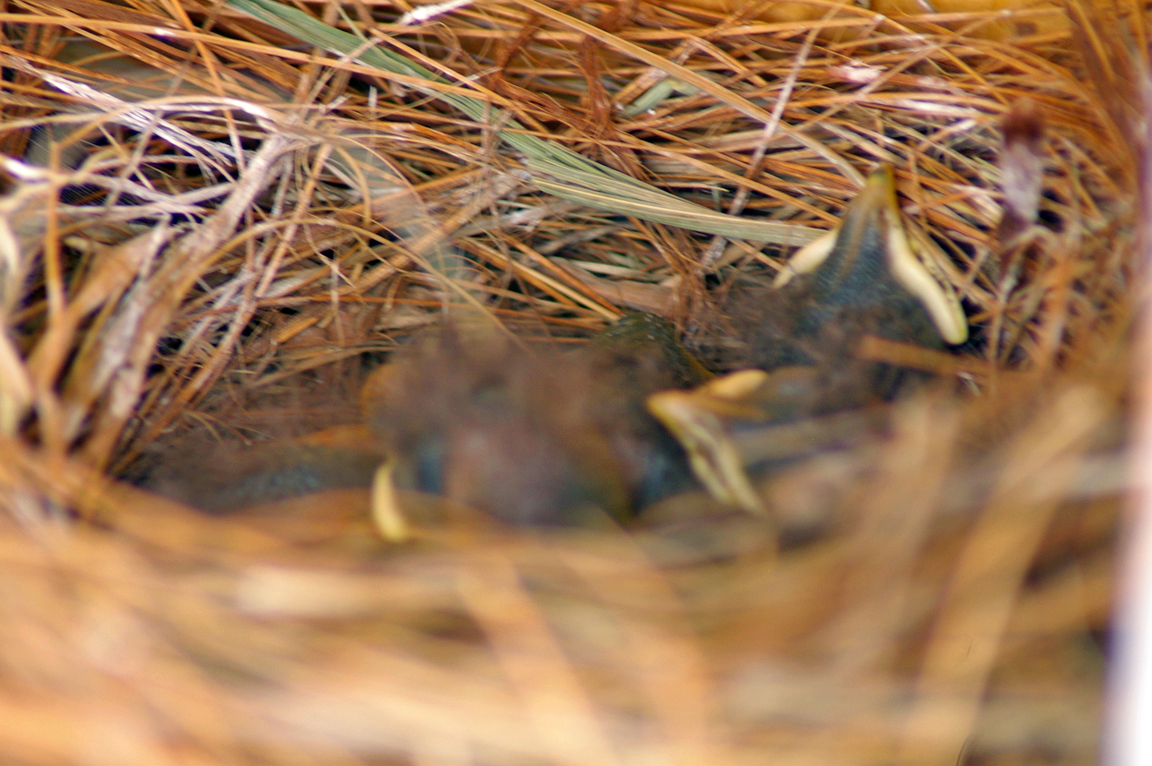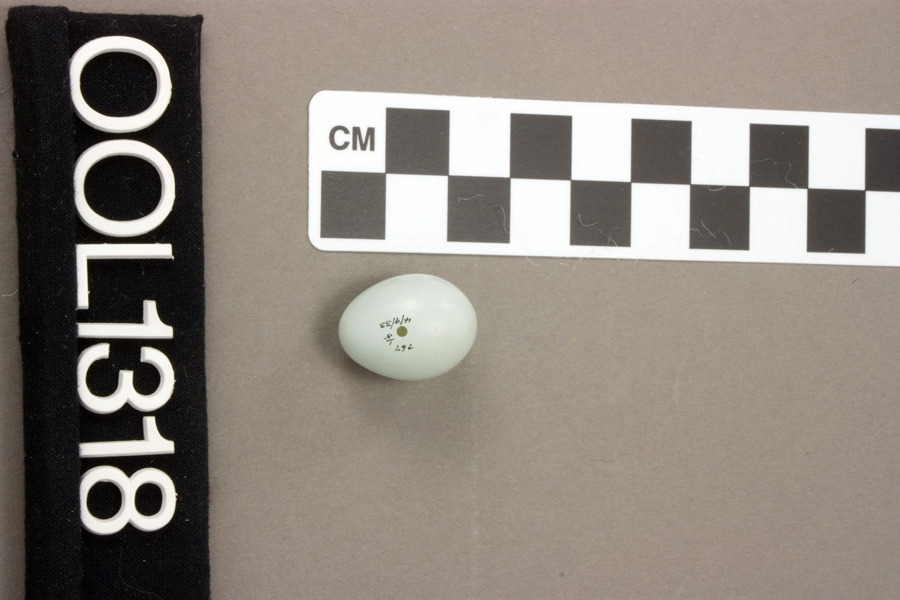|
|
|
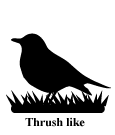 |
Western Bluebird
|
| Sialia mexicana | |
The Western Bluebird is a common sight in parklands of the West. Unlike the other species of bluebirds, it does not like large meadows, preferring open forests instead.
Interesting Information
-
Occasionally Western Bluebirds have helpers at the nest. Most of the extra birds attending nests are helping their presumed parents, some after their own nests have failed.
-
Genetic studies showed that 45% of nests had young that were not fathered by the defending male, and that 19% of all the young were fathered outside the pair bond.
-
Western Bluebirds can be helped by birds far beyond family members. Violet-green Swallows have been observed feeding and defending nests of Western Bluebirds.
Description
Adult Description
-
Length Range: 18-20 cm (7-7.75 in)
-
Weight: 28 g (1 oz)
-
Size: 2. Small (5 - 9 in)
-
Head large and round.
-
Wings and tail blue.
-
Chest red.
-
Some reddish on back.
-
Body stocky.
-
Tail medium-short.
-
Blue in wings and tail.
-
Reddish on back variable, from smudges on the shoulders to an entirely chestnut back.
-
Eyes dark brown.
-
Bill black.
-
Legs and feet black.
Sex Differences
Male dark blue with bright red chest. Female drab gray blue with duller reddish chest.
Male
Head, throat and upperparts bright, deep cobalt blue. Breast chestnut. Blue on belly and undertail coverts. Varying amounts of chestnut on back. Eyes dark. Legs dark.
Female
Duller and not extensively blue. Head and throat gray. Back gray-brown. Abdomen and undertail coverts grayish. Blue wings and tail. Chest duller chestnut.
Immature
Juvenile with spotted chest and back, blue in wings and tail. Immature similar to adults, but duller.

Photo taken from: The Sibley Field Guide by David Allen Sibley
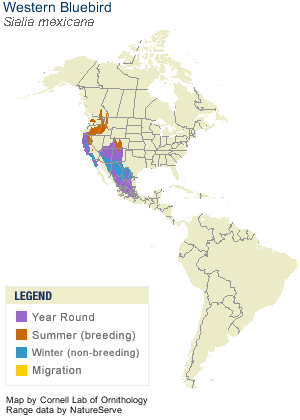
© 2003 Cornell Lab of Ornithology
|
Habitat |
|
Open coniferous and deciduous woodlands, wooded riparian areas, grasslands, farmlands, and edge and burned areas. |
|
Behavior |
|
Hunts from perches and drops onto ground to catch prey. Some flycatching and gleaning. May beat large prey against ground or branch before eating. |
|
Food |
|
Insects in summer, fruits and seeds in winter. |
Taxonomy
| Kingdom: | Animalia |
| Phylum: | Chordata |
| Subphylum: | Vertebrata |
| Class: | Aves |
| Order: | Passeriformes |
| Family: | Turdidae |
| Genus: | Sialia |
| Species: | Sialia mexicana |
| Subspecies: | Sialia mexicana anabelae |
| Sialia mexicana bairdi | |
| Sialia mexicana mexicana | |
| Sialia mexicana occidentalis |
Similar Species |
|
|
Bird Sound |
|
Call a soft "kew," often repeated several times. Also a chatter. Songs can be repeated calls. |
|
Eggs look like this |
|
Photo taken from: ARCTOS Collaborative Collection Management Solution |
